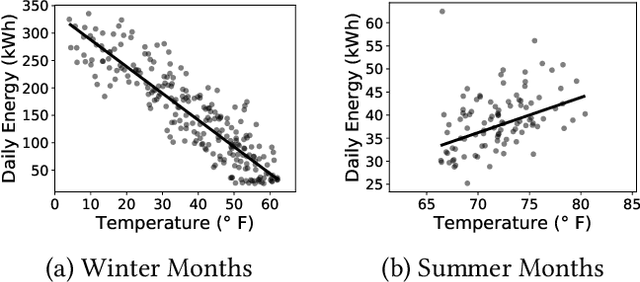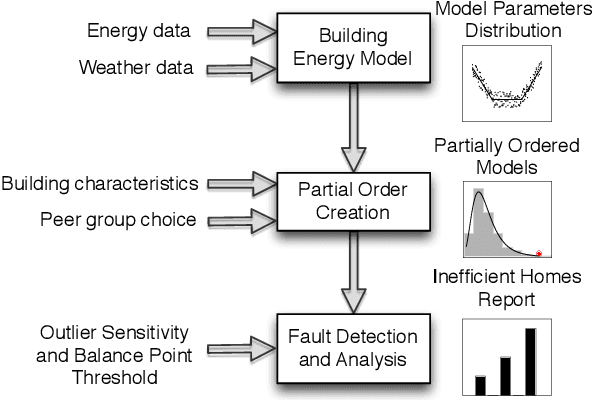WattScale: A Data-driven Approach for Energy Efficiency Analytics of Buildings at Scale
Paper and Code
Jul 02, 2020



Buildings consume over 40% of the total energy in modern societies, and improving their energy efficiency can significantly reduce our energy footprint. In this paper, we present \texttt{WattScale}, a data-driven approach to identify the least energy-efficient buildings from a large population of buildings in a city or a region. Unlike previous methods such as least-squares that use point estimates, \texttt{WattScale} uses Bayesian inference to capture the stochasticity in the daily energy usage by estimating the distribution of parameters that affect a building. Further, it compares them with similar homes in a given population. \texttt{WattScale} also incorporates a fault detection algorithm to identify the underlying causes of energy inefficiency. We validate our approach using ground truth data from different geographical locations, which showcases its applicability in various settings. \texttt{WattScale} has two execution modes -- (i) individual, and (ii) region-based, which we highlight using two case studies. For the individual execution mode, we present results from a city containing >10,000 buildings and show that more than half of the buildings are inefficient in one way or another indicating a significant potential from energy improvement measures. Additionally, we provide probable cause of inefficiency and find that 41\%, 23.73\%, and 0.51\% homes have poor building envelope, heating, and cooling system faults, respectively. For the region-based execution mode, we show that \texttt{WattScale} can be extended to millions of homes in the US due to the recent availability of representative energy datasets.
 Add to Chrome
Add to Chrome Add to Firefox
Add to Firefox Add to Edge
Add to Edge